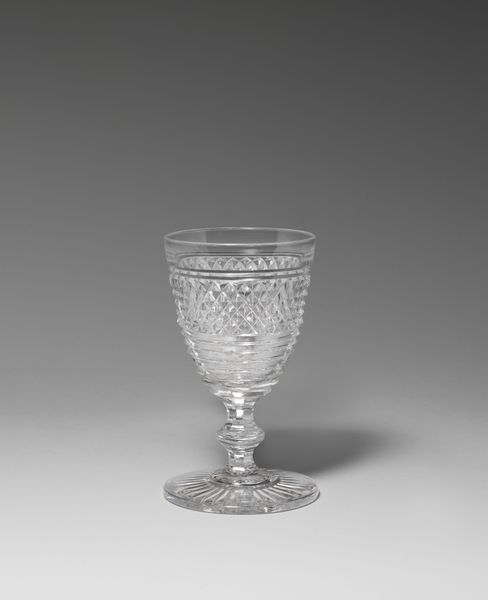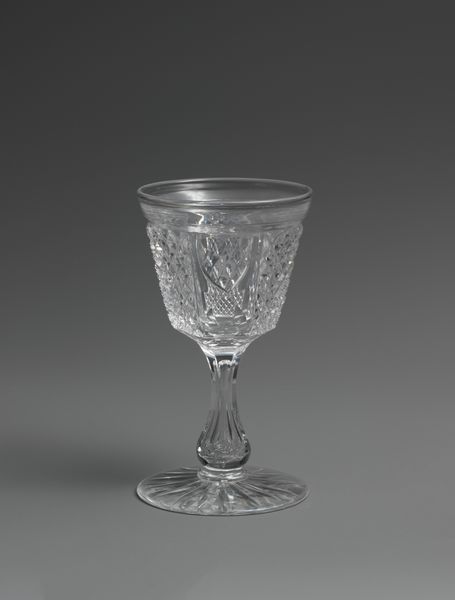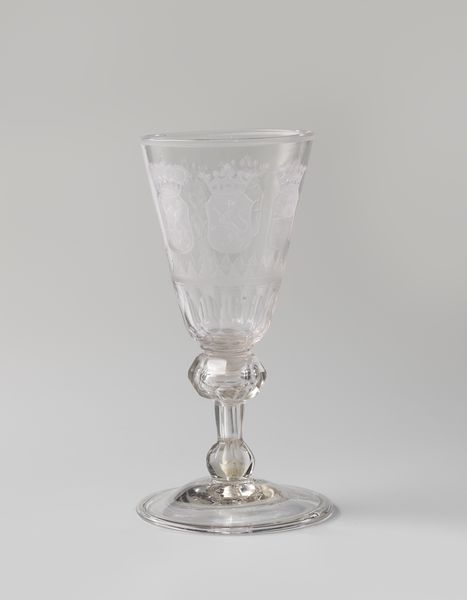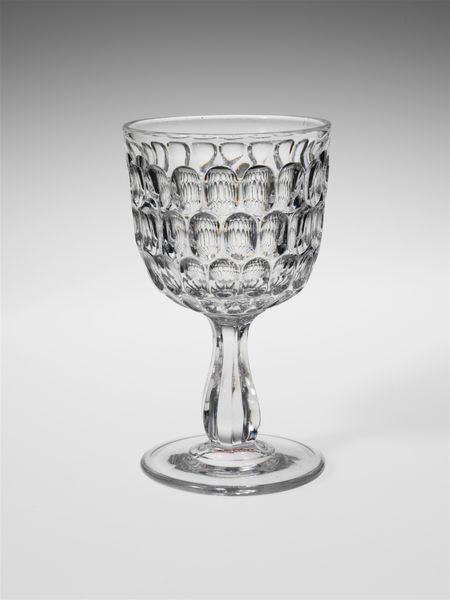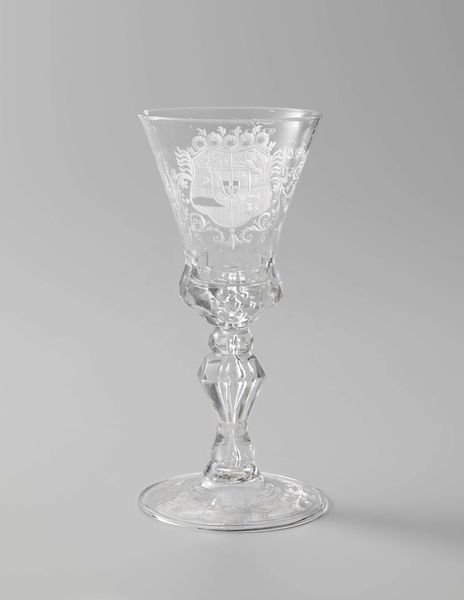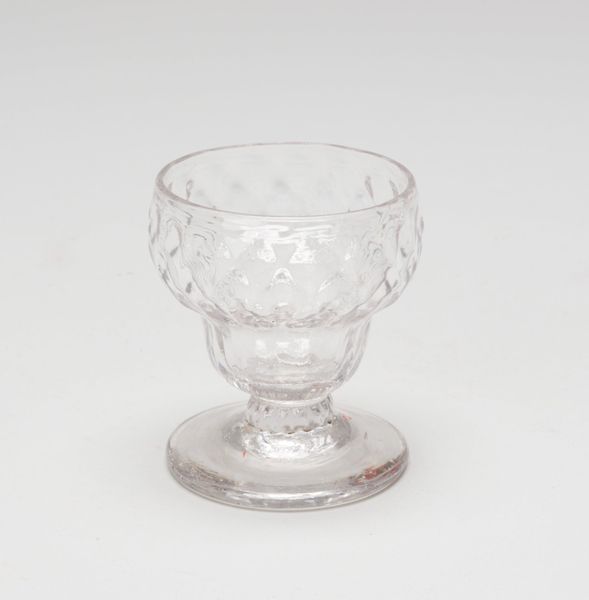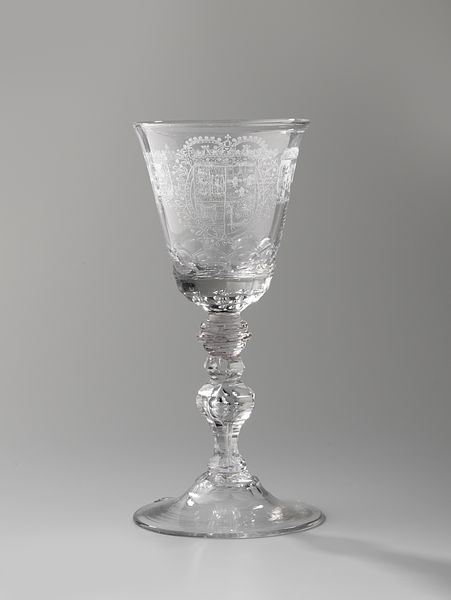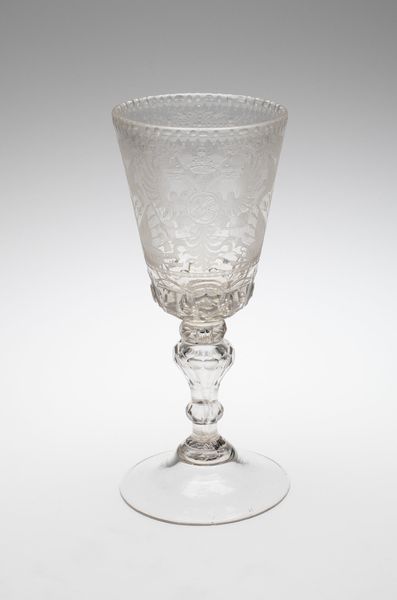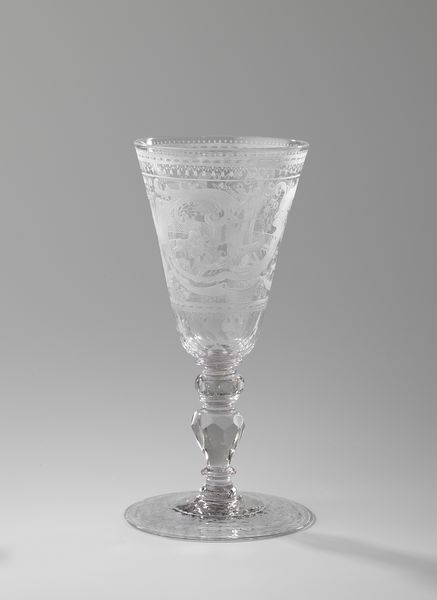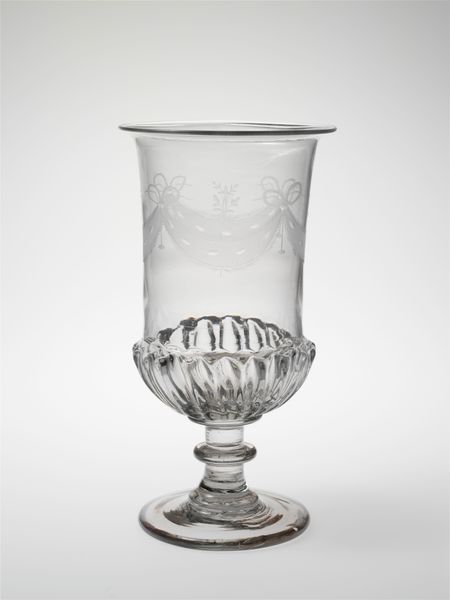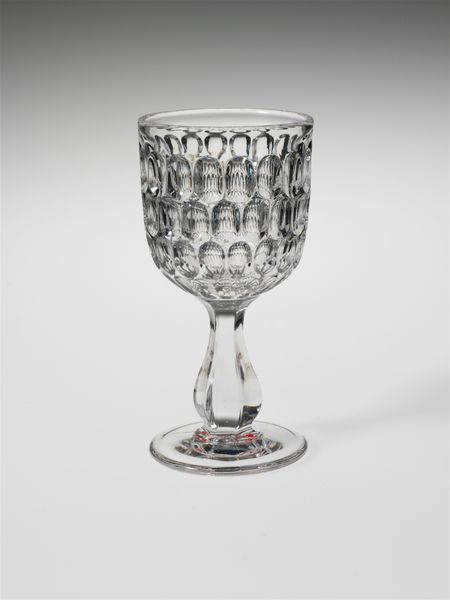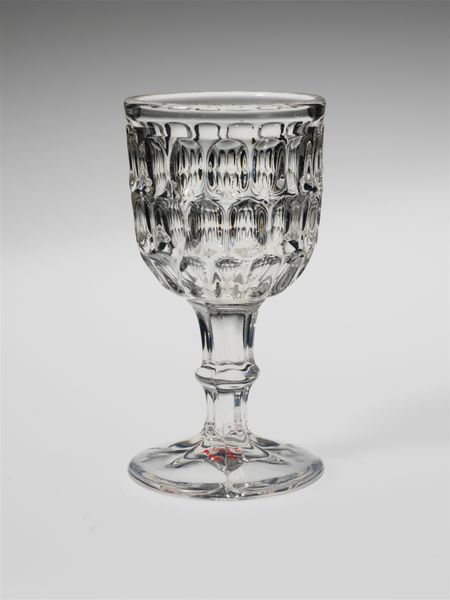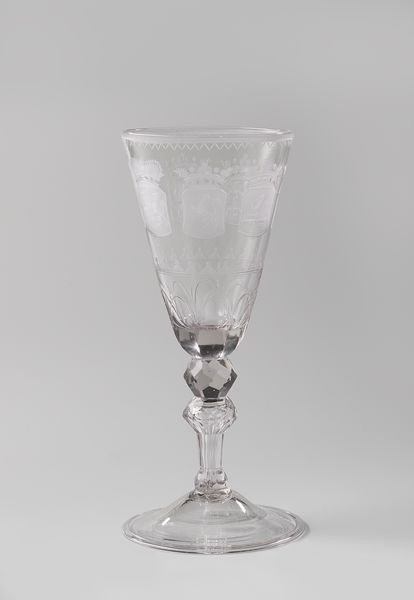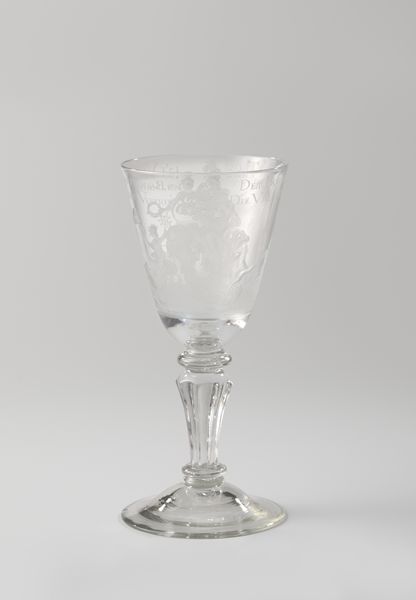
glass
#
neoclacissism
#
glass
#
romanticism
#
decorative-art
Dimensions: 4 1/4 in. (10.8 cm)
Copyright: Public Domain
Curator: Right now, we’re looking at a "Claret" glass made around 1818 by Pellatt & Green. You can currently find this piece housed in the Metropolitan Museum of Art. Editor: It’s so delicate looking. The facets catch the light beautifully, but I can't help but think how easily something like this could break! Curator: Absolutely. Pellatt & Green were masters of manipulating glass to mimic the preciousness associated with fine crystal, a commodity largely consumed by the wealthy at the time. This piece reflects that craftsmanship and also speaks to a particular social context. Editor: So, how would its production have impacted the social hierarchy and consumption habits? Were pieces like this made accessible to a wider population? Curator: The introduction of molded glass in the late 18th century allowed manufacturers like Pellatt & Green to produce intricate designs more rapidly and at a reduced cost, broadening access somewhat, while hand-cutting and polishing added additional expense. These technological advancements influenced industrial organization, transforming labor in the glassmaking sector, though these technologies initially intensified workplace challenges and increased economic precarity among glassworkers. Editor: So the aesthetics were chasing the aspirations of wider markets, even though production still had significant challenges for workers? It’s an interesting duality. Looking at it now, it makes you consider how the object itself masks these stories of labor and social division, doesn't it? Curator: It certainly does. The popularity of neoclassical design among the rising middle classes, often through luxury items such as this, reflects a deliberate effort to establish and affirm their social standing within a quickly-shifting landscape. A romantic sensibility shaped domestic spaces of aspirational classes, with ornate items signaling prestige. Editor: And in a museum, that original intent, that signalling, takes on another layer of meaning. It’s less about showing off and more about historical documentation. Its survival as a precious piece means it now reflects ideas of permanence or value for museum visitors and researchers. Curator: Exactly. It really makes one appreciate the intricate connections between craft, design, and the broader social narratives they represent. Editor: A fascinating glimpse into both a specific time and the evolving nature of how we engage with objects and history!
Comments
No comments
Be the first to comment and join the conversation on the ultimate creative platform.
